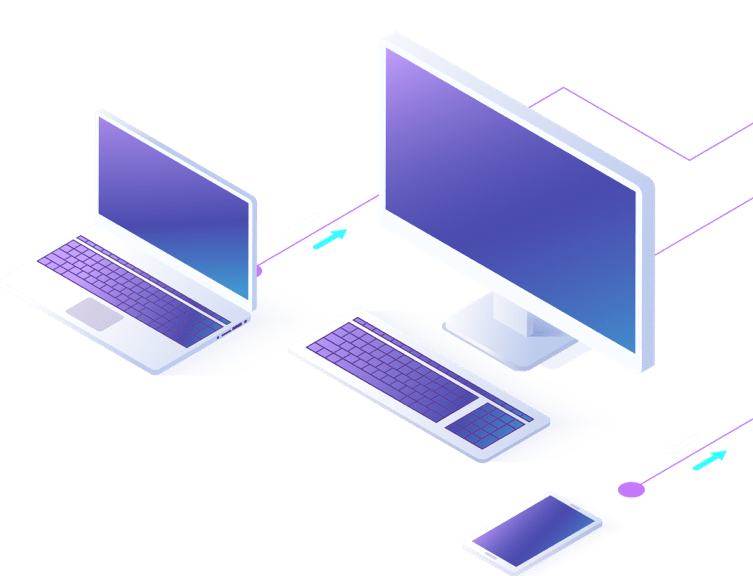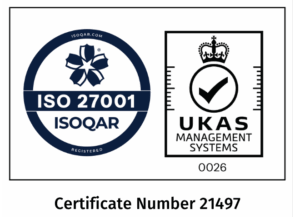Encryption is essential—but it’s not enough on its own. Holistic data protection beyond encryption is essential. Effective data protection blends data classification, data loss prevention (DLP), identity and access controls, endpoint and cloud security, backup and recovery, and continuous monitoring into a cohesive, risk-based strategy.
Why “just encrypt it” no longer cuts it
Encryption solves a critical problem: if someone intercepts your data, they can’t read it. But most breaches don’t look like Hollywood wiretaps. They’re credential theft, misconfigured cloud storage, over-permissive access, lost laptops, or a user mistakenly sharing the wrong file. In those cases, encryption is necessary—but not sufficient.
Modern data security means protecting information everywhere it lives and moves: endpoints, servers, SaaS apps, public cloud, email, and collaboration tools. That requires a holistic approach that starts with understanding your data and then layering controls based on risk.
Step 1: Know your data (classification and discovery)
You can’t protect what you don’t know you have.
-
Data discovery: Scan endpoints, file servers, cloud stores, and SaaS platforms to inventory sensitive data (PII, financial, IP).
-
Data classification: Apply labels (e.g., Public, Internal, Confidential, Restricted) that follow the data across tools. Classification drives policy: who can access, how it’s shared, and where it’s allowed to live.
-
Context matters: Combine content inspection (what’s in the file) with context (who created it, where it’s stored, business unit, project) to reduce false positives.
Outcome: You gain visibility and a policy engine you can automate against.
Step 2: Encrypt—intelligently
Encryption should be table stakes, but do it right.
-
At rest & in transit: Enforce TLS everywhere. Turn on full-disk and database encryption. Use cloud KMS with strong key rotation.
-
Key management: Separate duties so admins can’t read data. Use hardware-backed keys where practical. Rotate and revoke keys tied to compromised credentials.
-
Application-layer protection: For highly sensitive fields, consider tokenisation or format-preserving encryption so systems can function without exposing raw data.
Outcome: Even if storage is accessed, the data stays unreadable without the right keys and context.
Step 3: Prevent loss before it happens (DLP)
Data Loss Prevention (DLP) enforces how data is used, shared, and moved.
-
Policy examples: Block sending “Restricted” data to personal email; warn before sharing a “Confidential” file externally; prevent uploads of PII to unapproved cloud apps.
-
User-centric controls: Start with coach-and-warn to build good habits, then escalate to hard blocks for repeated violations.
-
Coverage: Apply DLP across endpoints, email, web, and SaaS to close escape routes (screen captures, USB, print, sync clients).
Outcome: DLP transforms classification into practical guardrails that reduce accidents and exfiltration.
Step 4: Control access with Zero Trust
If an attacker gets a password, traditional perimeter defences won’t help. Adopt Zero Trust principles:
-
Strong identity: Enforce MFA everywhere, especially for admins and remote access.
-
Least privilege: Use role-based access control (RBAC) and just-in-time elevation. Remove standing admin rights on endpoints.
-
Conditional access: Evaluate user, device health, location, and session risk before granting access. Quarantine risky sessions automatically.
Outcome: Access becomes dynamic and risk-aware, not one-time and static.
Step 5: Secure the endpoints and the cloud
Data lives on devices and in cloud apps—secure both.
-
Endpoints: Use EDR/XDR for behavioural detection, full-disk encryption, hardening baselines, and mobile device management (MDM) to enforce posture and remote wipe.
-
Cloud/SaaS: Apply CSPM/SSPM to catch misconfigurations (public buckets, excessive sharing, stale tokens). Turn on tenant-wide protections like OAuth app governance and external sharing limits.
-
Shadow IT: Monitor and rationalise “unsanctioned” apps; provide approved alternatives for common use-cases (file sharing, notes, automation).
Outcome: You reduce the attack surface where data is created, processed, and shared.
Step 6: Build resilience with backup & recovery
Security isn’t perfect—resilience is your safety net.
-
Immutable backups: Protect backups with separate credentials, immutability, and offline copies to withstand ransomware.
-
Granular recovery: Ensure you can restore not just whole systems but specific files, mailboxes, or SaaS objects.
-
Test frequently: Run recovery drills and document RTO/RPO expectations with the business.
Outcome: When (not if) an incident hits, you can recover quickly and confidently.
Step 7: Monitor, detect, and respond
Visibility converts surprises into manageable events.
-
Unified telemetry: Stream signals from endpoints, identity, email, DLP, and cloud into a SIEM or XDR platform.
-
Analytics & automation: Use detections tuned to your data policies—e.g., mass downloads of “Restricted” files, impossible travel with sensitive access, anomalous sharing.
-
IR runbooks: Pre-define playbooks for data leakage, compromised accounts, ransomware. Include comms, legal/regulatory steps, and customer notification workflows.
Outcome: Faster detection and consistent response reduce business impact.
Step 8: People and process: the multipliers
-
Security awareness: Short, frequent, role-specific training beats annual marathons. Focus on how to work securely in the tools staff already use.
-
Secure collaboration by default: Templates for external sharing, guest access, watermarking, and expiry dates make the safe path the easy path.
-
Governance: Review data policies quarterly. Align with legal, privacy, and compliance (GDPR, ISO 27001, SOC 2, HIPAA as appropriate).
Outcome: Culture and governance sustain the technology controls.
How NVOY Technologies can help
Whether you’re formalising controls for certification or closing urgent gaps, we can help you design a data protection strategy that actually maps to how your business works—today and as you scale.




